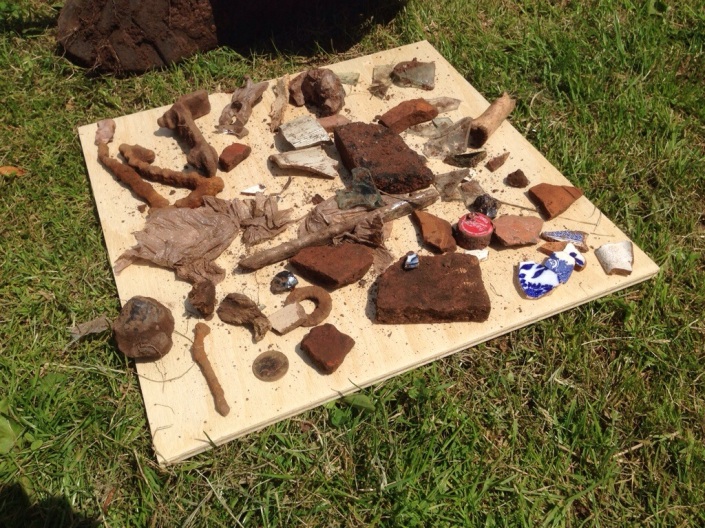Revelry and Respite, Railways and Rivers.
Located just over the bridge behind the Create Centre, Ashton Meadows a rich diversity of flora and fauna as well as a fascinating history.
Read about some of its most interesting aspects below…
Geology
- The rock beneath the meadows is limestone and sandstone. The fossil shells and corals indicate that the limestone formed in shallow tropical seas in the Carboniferous, 350 million years ago.
- The surface geology of Ashton Meadows consists of tidal flat deposits, a consolidated soft silty clay, with layers of sand, gravel and peat. The area has characteristically low relief from being in a tidal zone.
River
- The River Avon has the second highest tidal range in the world at 15 metres (49 ft), second only to Bay of Fundy in Eastern Canada.
- It is also one of the most bio-diverse chalk streams in the UK.
- Creatures that live in it include otters, water voles, Atlantic salmon, brown trout and kingfishers.
- The New Cut is an artificial waterway constructed between 1804 and 1809 to divert the tidal River Avon. It was part of the process of constructing Bristol’s Floating Harbour, under the supervision of engineer William Jessop, and runs from Totterdown Basin to the Underfall sluices at Rownham near Ashton Meadows. 1.8 miles (2.9 km) in length the cut includes short sections of the original course of the River Avon at either end. No ships have navigated the cut on a regular basis since the 1930s.
- Packet boats ran regular services to Cardiff and Swansea from the Bathurst Basin until the 1930s, the two bridges built across the cut below this point, the Vauxhall Bridge (pedestrian) and Ashton Swing Bridge (road and rail), were swing bridges to allow for the passage of these steamers.
Fauna and Flora-
- There are over 300 types of plants, 18 types of butterflies and 70 species of birds in Bristol’s harbour and New Cut.
- Peregrine falcons, the fastest-flying birds in the world, able to dive at 200 miles per hour, nest in the gorge.
- Jackdaw and Horseshoe bats live in the caves and bridge buttresses.
Rownham Ferry
- The Rownham Ferry is an ancient ferry crossing on the River Avon, leaving from Ashton Meadows on one side and landing at the Rownham Tavern, (demolished in 1873) in Hotwells on the other.
- The ferry was being used as early as the twelfth century.
Ashton Meadows Sidings
- Since the nineteenth century a tramway and later the railway featured as part of the landscape in the area in the form of Ashton Meadows Sidings and it’s predecessors. Check out some great pictures documenting is history here. Ashton Meadows sidings was formerly the exchange yard between the harbour branch and the line from Portishead to the main line at Parson Street junction. It was also the site of a civil engineers depot.
- The Portishead Railway was closed by the Beeching Axe in the 1960s, but has now been reopened for freight traffic as far as Royal Portbury Dock.
- The railway was single-tracked in 1976 and shut completely in the mid-1980s, possibly 1983. It was however visited by GWR Pannier Tank 1369 in 1996. The trackbed is now the foot and cycle path leading across Ashton Avenue Bridge to the Create Centre.
The White City
- In 1914 Ashton Meadows was home to the Bristol International Exhibition. A large white pavilion was erected alongside several buildings depicting England through the ages and the whole exhibition was constructed predominately from white plasterboard.
- According to the Bristol Post, attractions included ‘replicas of Bristol castle, Drake’s ship Revenge and a group of buildings depicting “Shakespeare’s England”‘. There was also a ‘figure of eight roller-coaster, Eastern Tea Gardens, “Bostock’s arena and jungle”, the Bowl Slide, the “Crazy Kitchen”, and a “House of Nonsense”‘.
- When war broke out later that year the locally recruited Glosters battalion needed a barracks and HQ as well as training facilities, and by mid September 1914 the War Office had acquired the exhibition site which the Royal Engineers set about converting into a military facility.
- Post-war thousands of homeless families took the law into their own hands by “requisitioning” empty military camps across Bristol and the country,Ashton Meadows became one such site.
Sylvia Croweland
- Cumberland Piazza, also known as Sylvia Croweland was constructed nearby by the landscape artist in the mid-1960s.
Ashton Avenue Bridge
- Ashton Avenue Bridge is a former road-rail bridge and is Grade II listed. it was constructed as part of the Bristol Harbour Railway and could open both ways, with a reversible motor housed in a signal cabin perched above the road deck. The hydraulics drained the dock system of 182 gallons of water every time the bridge opened, which it did so ten times a day.

